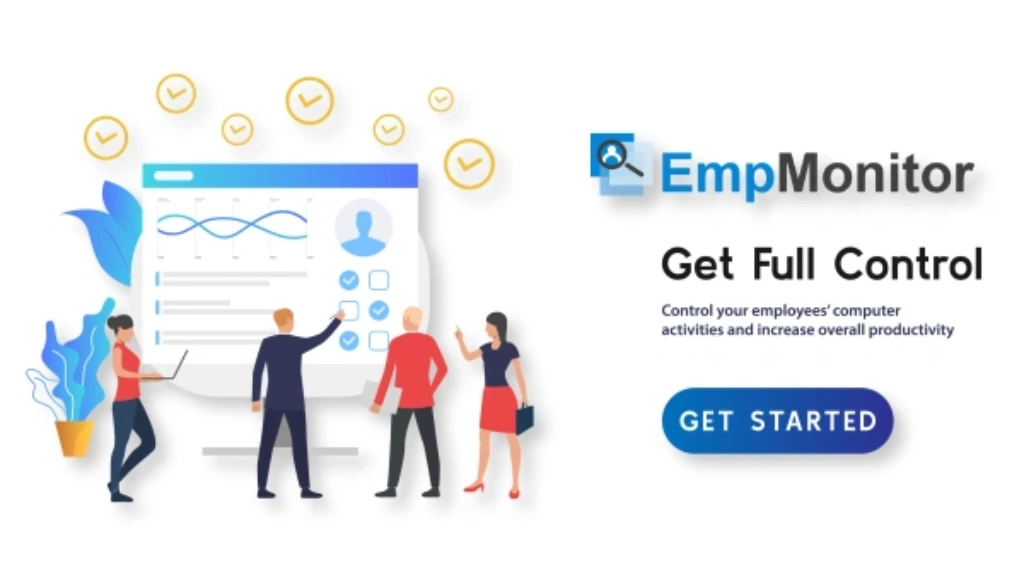Sometimes, it can be nearly impossible to balance multiple projects. Employees find themselves in tricky situations where they juggle between task requests, deadlines, and meetings. When multiple projects demand attention at once, it becomes more stressful. There are some clear solutions. Simple steps can lighten up a stressful environment and enhance results.
Why Balancing Multiple Projects Is Difficult?
Each project must have its own steps, goals, and deadlines. Some of the tasks might cross over. Different things may be required from different teams. Focus diversions waste time. Never-ending switching also saps energy. Distractions will always cause an inferior quality product. With too many projects running in parallel, mistakes start cropping up. It elevates the stress level.
A heavy workload requires careful time management to handle tasks systematically and fairly. Many people even turn to online platforms like write my project services when faced with multiple overlapping deadlines. This highlights how real the need is and why having effective systems in place is so important.
Workload Management Strategies That Work
Put down all projects in one place:
Write down the main tasks with deadlines. This could be as simple as an oversimplified chart, maybe simply a paper list. Prioritize by importance, meaning which should be done first, e.g., on a simple table of high, medium, and low priority.
Break the larger jobs into smaller tasks:
Smaller tasks feel easy to do, as they are also easier to complete. Put a check mark against each completed item. Give yourself a pat on the back for those small wins. That keeps the energy high.
Consider time blocking:
Assign big chunks of time to working on only one project. During those chunks of time, eliminate distractions. You can also consider using a timer to work for a specific amount of time and then take a short break afterward.
Software like EmpMonitor can also help minimize distractions by providing reports on application usage and idle time, allowing employees to stay focused during deep work sessions.
Batching:
This means that similar tasks should be done together. For example, stack up emails and address them at hearted times, whatever will ensure they get done. Batching meetings throughout the week onto a particular day, even if you can, this essentially saves time setting things up and switching tasks’ context.
Use the two-minute rule:
If something is going to take two minutes to do, do it now. In this way, you would avoid a buildup of these important little tasks instead.
Project Management Tips: Tools And Methods
Use a simple project board or software
A Kanban board shows tasks as cards. Move cards from to-do to done. Project management tools like EmpMonitor, which offer Kanban boards, Gantt charts, productivity tracking, and project insights, can help your team manage projects effectively, whether remote or in-office, ensuring smooth workflow and improved efficiency.
Keep lists short
Focus on the next three to five tasks you can do today. This keeps your day realistic.
Track time for a week
Note how long tasks take. This helps you plan better. You will avoid underestimating work.
Communicate Early And Often
Inform your manager if you are in heavily loaded work. Prioritize your requests. Show clear areas for negotiation. Managers often are not aware of how full your plate is. Inform the team about the progress being made. A short update daily or weekly will prevent surprises and demands from below at the last minute.
Learn to reluctantly say no. Offer suggestions with a contrary opinion, like asking for more time on a deadline or scrapping a task of lesser importance.
Professional, Project-Specific Help Seeking
At times, workload goes beyond handling capacity; the surge in workload usually goes with a season or complicated projects. Professional project help renders this. Works that should be assigned to project assistants or project consultants are reporting, tracking deadlines, or following up.
It would be possible not to bother with perma-frees or employ intermittently: hire a freelancer for one-off spikes; stop by the office for purposes of data entry or document drafting; open hours for really high-impact works.
Asking your director to hire help certainly entails showing which risk gets reduced due to that assistance. When work is dispersed across the whole team, everybody wins from the situation.
It’s Small Habits That Save Employees From Overwork
Keep off work time boundaries. Do not check work messages at night if you can transfer that boundary. Taking small breaks often brings more energy during the day. When you face blockages, step out for fresh air.
Sleep and food nutrition matter; one should be refreshed to judge better. Simple food intake gives constant energy for better decision-making.
Practice single-tasking: Full focus on one project for a set period will give you more than splitting attention.
Closing Ritual: This means, at the end of the day, a very short review of everything that has taken place or will take place. The top tasks for the following day are planned. All apps are closed. This helps your brain to cool down.
Read More
Delegate Smartly And Clearly
Reduce the overload as much as possible when delegating work. Properly assign tasks with well-laid-out instructions and deadlines at the end. Check in at key points. Thank people who assist you. Teach others how you like the work done.
Save time by keeping templates or standard steps, as that reduces rework in the future. Managers are to match task types with the appropriate skills. A junior team member could become an asset with proper training. These are realistic schedules. Buffer time must be set in the project plan. Projects without deadlines are a source of stress. For urgent tasks, include a safety margin while reviewing the time.
Split long timelines into monthly and weekly milestones, as that provides an early indication when work is slipping behind. When more than one project conflicts, ask them to replan. A shifted deadline for one project could save the whole team from overload.
Project management tips for team leads:
Team leads should hold regular planning sessions. These short stand-up sessions will allow the team to align work. Keep meeting time focused and brief. Rotating tasks prevents burnout. When the same individual handles a high-volume task every time, he or she will eventually tire.
Establish and recognize a culture of realistic timelines. Value quality above speed in praise to teams. Let data be the guide for decision-making. Keep a record of workload across team members. When one person has a disproportionate share of the load, transfer some responsibilities.
How managers can lend support to a perfect balance regarding workload:
Managers set the tone for balanced work. They should ask employees about their workloads. Managers should know the signs of overload. These include missed deadlines, low energy, and a drop in quality.
Provide career paths that do not require constant overtime. Intelligence, planning, and delegation would win awards. To be skilled in workload management, there should be training with resources and templates on planning and prioritization. Make professional project assistance available. This can involve internal support teams or vetted freelancers when required.
Avoid Employee Overload With Policy
Companies need to implement policies that would prevent chronic overload by allowing flexible schedules or work-from-home arrangements. Such policies would also limit late-night emails and provide mental health days.
Establish clear rules on encumbrance and authority for sudden reassignment of tasks. That is how this item is titled.
Fairly distribute work. Many teams use point systems for tasks and set a maximum number of points per person per week.
Survey and assess workloads continually. These policies need regular review and possible changes as the team expands.
Plan For Your Ups And Downs
All teams have seasons of extreme work; resource planning should help prepare for peaks. Adjust that temporary hire or lighter tasks before a peak.
Critical competencies are divided among multiple employees through cross-training. There are no time losses in one employee’s absence when others can function without him/her.
Outsource non-core functions. Place administrative or low-value tasks with vendors to free up team time.
Personal Skills To Manage Stress And Focus
Form an easy routine: a short daily review, clean to-dos, and a start time fixed beforehand. Deep work blocks should be used for concentrated work.
Reinitialize quickly. When stress spikes, breathe in deeply three times. This slows the mind down and helps to regain clarity.
Listen to a focus playlist or use noise-cancelling headphones. These little things can help with staying on track.
Project Management Advice For Career Progression
Good workload management makes an employee more valuable. Employers notice when someone handles multiple projects with ease.
Build a track record of delivering clear, organized plans, and keep a record of your achievements for performance reviews.
Learn the basic tools and techniques related to projects. Even a short certification or course can make a big difference in your career.
Final Steps To Avoid Overload
Balance is built on skill, tools, and culture. You should apply workload strategies like time blocking, batching, and clear priority lists. If you find yourself stuck behind the power curve, communicate soon and ask for help. Engaging the project management professionals helps when dealing with spikes or complicated tasks.
By nurturing small daily habits, you can save your employees from feeling swamped at their workplace. Sleep, draw the lines, and arrange brief breaks. Slow and steady should win the race.
When you implement these project management tips, you will be able to handle more tasks while maintaining quality. With practice, balancing multiple projects will become second nature.
Frequently Asked Questions
How can employees identify early signs of project overload before it becomes serious?
Employees can spot overload early by noticing patterns like constant missed micro-deadlines, difficulty prioritizing, or relying on overtime regularly. Recognizing these signs early allows proactive adjustments before stress and errors escalate into bigger challenges.
What role does technology play in balancing multiple projects effectively?
Technology supports balance by automating tracking, centralizing updates, and reducing manual oversight. Tools like EmpMonitor provide insights into productivity trends, task progress, and resource allocation, helping both managers and employees maintain efficiency while preventing project-related burnout.
Can switching between projects ever be beneficial instead of harmful?
Yes, switching projects strategically can refresh creativity, especially when facing mental blocks. Briefly shifting focus provides a new perspective, prevents monotony, and can accelerate problem-solving—though constant, uncontrolled switching should still be avoided to maintain efficiency.
How can remote employees maintain visibility while managing several projects?
Remote employees can stay visible by sharing regular progress updates, maintaining transparent communication through dashboards, and using productivity monitoring tools. Visibility ensures managers understand workloads clearly, reducing misunderstandings and helping distribute tasks fairly across distributed teams.













